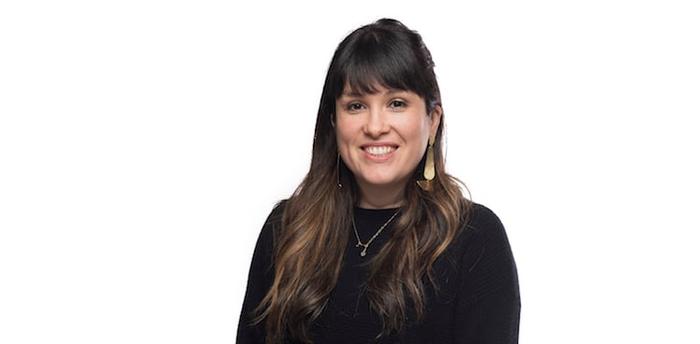
Margarita Rojas’ career has taken her all over the world, from her Colombian homeland to California to her current role as Head of EMEA Marketing for Asana in Dublin. A strong international point of view is one thing both Rojas and her current employer have in common. “It is so gratifying that Asana has such a global mindset as a company, rather than being U.S.-centric,” she says.
Read on to learn more about her global career, as well as her tips on everything from thriving in ambiguity to breaking into the tech industry from a non-tech background.
Tell us about your career journey, and what led you to your job at Asana.
After graduating from college, getting my master’s, and working for P&G and Colgate for two years in Colombia (where I’m originally from), I decided to move to San Francisco. I started my career there as a Marketing and Communication Manager at La Cocina, a nonprofit organization that focuses on cultivating low-income food entrepreneurs as they launch and grow their businesses. It was an incredibly fulfilling experience to have a direct impact on the lives of low-income immigrant women entrepreneurs.
After two years at La Cocina, I decided to look for opportunities in the tech industry. I joined Evernote where I launched the customer operations for Latin America and Spain. I ultimately moved up to Senior Marketing Manager for Latin America. At this point, I was ready to bring my talent and skills to a new company and product. In 2016, I joined the International team at Weebly, where I worked closely with the VP of International to scale international operations in Germany, France, and the UK and also launched in Latin America, Spain, Taiwan, and Korea. During this time, I realized I enjoyed working with companies that were focused on improving productivity, and Asana was one of those companies.
Fast forward three years, I’ve launched Asana in four languages, activated three regions, hired an amazing team of regional marketers, and helped build the foundation of international marketing at our headquarters in San Francisco. I recently moved to Dublin, where I'm now leading the EMEA Marketing and localization teams.
What are you responsible for in your role at Asana?
I’m responsible for the go-to-market strategy and for growing Asana’s presence in our priority markets in EMEA. My team ensures that we provide the best localized experience in all the stages of the customer journey. We create, plan, and execute marketing programs that are relevant and resonate with the culture and mindset of our local audiences in key markets.
What attracted you to work at Asana?
I was drawn to Asana’s mission even before I joined, for so many reasons. Our mission is to “help humanity thrive by enabling the world’s teams to work together effortlessly.” The fact that we are acknowledging “the world’s teams” is key to me, given the nature of my role.
I also love to have an impact on the way that people work and improve their productivity and collaboration. Asana has built a product where teams can work together to accomplish their mission by focusing on the work that truly matters.
Lastly, Asana’s Diversity and Inclusion program has been extremely important to me since I joined. As a minority and a woman of color, I wanted to work for a company that cared about this topic and spoke openly about it. Through my journey at Asana, I have had the chance to be a part of such a supportive community.
What do you love most about working in marketing, specifically within the tech industry?
Nowadays, the marketing function goes beyond just advertising, and it is a mix of channels, including paid advertising, content, web marketing, PR, events, communications, and operations. This has really changed the skill set that is now required in a marketer. A good marketer needs to be a great storyteller, be data-driven, and be a fast learner since channels are continuously changing. I love how cross-functional marketing has become—we work closely with product, sales, customer success, and even data science teams to understand target audiences and co-create go-to-market strategies and custom messaging and campaigns that will resonate with those audiences.
What does a normal day in your job look like?
During my commute, I listen to my favorite podcast, Marketing Trends, and Women at Work from HBR for inspiration. It’s a great way to start the day. During the morning, I usually try to block one hour off to check my Inbox in Asana. Because I’m based out of our Dublin office, most of the San Francisco HQ requests will come through when I’m sleeping, so during the morning, I prioritize what needs to be addressed immediately.
After doing that, I organize my day based on those priorities and the meetings of the day. If I’m leading a meeting, I review the agenda; if I’m participating in a meeting, I jot down three questions or topics that I want to address. For both meetings, if I’m bringing up a challenge that we are currently facing as a team, I will try to arrive with a solution or questions that will help the team to find a possible solution. My meetings are pretty diverse, from marketing, to sales, to recruiting, to 1:1s with my team, which is one of my favorite parts of the job—it shows the greater impact of my role.
What programs or initiatives does Asana offer to support learning and development of its employees?
One of my favorite initiatives that Asana offers to support learning and development is the executive coaching benefit. They provide six sessions with amazing personal or professional coaches where you can focus on career development, public speaking, executive presence, and storytelling, among other topics. This perk has been beneficial to me in becoming a better leader, manager, and speaker, and has helped improve my overall confidence.
What advice do you have for someone just starting out in marketing—and for those trying to break into the tech industry in a non-tech role such as marketing?
I recommend starting as a marketing generalist and working at a startup. A lot of startups won’t have the level of specialization compared to bigger companies. They are a bit more flexible about hiring someone that doesn’t know all the different marketing channels, and they are more interested in hiring someone who has hustle, is curious, and is a problem-solver.
Startups are an excellent opportunity to learn fast, test, and iterate. As a marketer, you will be able to determine if you want to go deeper into one channel and jump into a more structured team, or continue with the generalist career path. Keep in mind, the bigger the company, the more specialization they are looking for in one channel (paid acquisition, content marketing, PR, marketing ops, community, branding, and others).
What is the hardest part about your job or the biggest challenge you have faced since starting at Asana? How have you overcome it?
One of the biggest challenges that I have faced throughout my career is learning to be comfortable with ambiguity. When companies are growing so fast, there are so many unknowns, processes, and systems that haven’t been put in place. There are going to be uncomfortable times where the leadership team is going to ask you to move fast without having all the pieces in place.
Through my experience, I have learned you need to execute without having all the information you need. Make the best decision with what you have; what is the worst that can happen? You make a mistake, but you learn from it and iterate. Get comfortable with making mistakes by looking at them as learning opportunities. Your manager will value that you are a problem solver, and you can deal with ambiguity. It will also show you are confident in yourself and your abilities.


